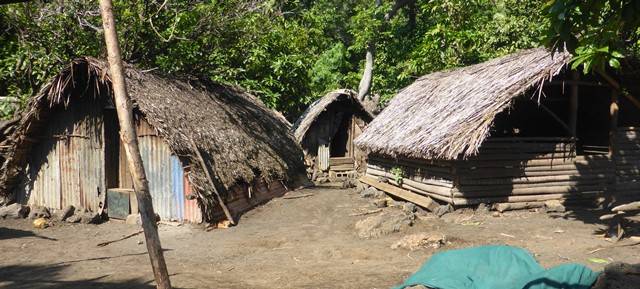Approach: A Case Study of Post-Disaster Management after Cyclone Pam (March 2015) is conducted in Vanuatu.
Goal: This research project looks into natural hazards in the Pacific Island region, concentrating on Cyclone Pam in Vanuatu. Cyclone Pam has been one of the worst natural hazards that ever hit the Pacific Island region. More than a quarter of the country’s population had to seek protection in emergency shelters and standing crops in the fields were destroyed to more than 95 percent. More than 166,000 people – which is more than 60 percent of the country’s population – were in need of food distribution.
Fieldwork: This is a collaborative research project by the University of the South Pacific. In June 2018, I conducted research in several villages on Tanna Island. My part of the research focusses on two main researach questions:
1) What are Tannese peoples’ most urgent needs three years after cyclone Pam?
2) What role does traditional housing play in disaster risk reduction?

In January 2018, Dr Frank Thomas and Dr Manoranjan Mohanty went for research to Vanuatu to investigate generally into knowledge and practice regarding to disaster risk reduction (Dr Thomas) and the policy environment (Dr Mohanty). In 2017, Dr Eberhard Weber conducted fieldwork on traditional cyclone shelters.
